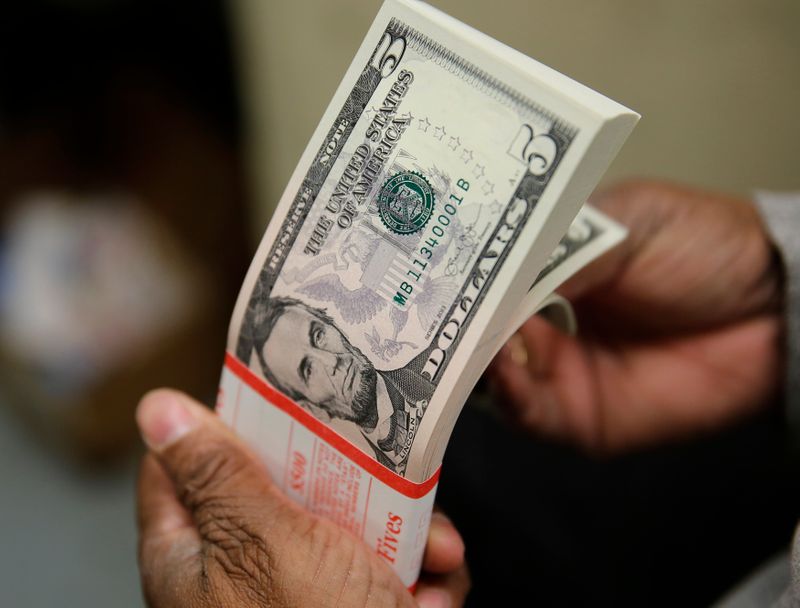NEW YORK (Reuters) – The dollar dropped on Friday, falling for eight straight weeks, as investors looked to other currencies whose economies are currently outperforming that of the United States in terms of managing the coronavirus pandemic.
The delay in the passage of additional U.S. stimulus for virus relief did not help the dollar’s cause as well.
The dollar’s eight consecutive weeks of losses represent its longest weekly run of declines in a decade, Refinitiv data showed, with Friday’s decent batch of U.S. economic data failing to lift the greenback.
“Because of higher coronavirus case counts in the U.S., you have the prospect of longer restrictions,” said Ranko Berich, head of market analysis, at Monex Europe in London. “You have the prospect of longer-lasting drags to human behavior and that means slower recovery in the United States than other developed economies.”
The United States has 5.01 million confirmed coronavirus cases and more than 160,000 deaths, more than any country.
Hopes for additional stimulus to combat the pandemic faded on Friday, with the Senate and House of Representatives in recess and no fresh talks scheduled with U.S. President Donald Trump’s negotiators.
Trump, however, announced on Friday the White House is preparing to provide relief for the economic pain caused by the virus as legislation stalls in Congress, saying his administration is ramping up to send money to families, state and local governments, and businesses.
Markets, however, reacted little to his announcement.
In afternoon trading, the dollar index slipped 0.1% to 93.124 <=USD>. The eight weeks in a row of losses was the worst losing streak since June 2010.
The dollar was unmoved after data showing a 1.2% rise in the U.S. retail sales’ headline number in July, which was lower than expected, but a higher than forecast gain of 1.9%, excluding autos.
Other reports such as U.S. consumer sentiment and industrial production had little dollar impact on Friday.
Against other currencies, the dollar had its best weekly percentage gain versus the yen in two months. It was last down 0.3% at 106.60 yen <JPY=EBS>.
The euro, meanwhile, continued its rise, up 0.2% at $1.1835 <EUR=EBS>, rising for eight straight weeks.
Growing faith in Europe’s rebound and concern about the U.S. response as the coronavirus spreads and politicians remain deadlocked over the next relief package have bolstered the euro.
“We saw the euro touch $1.19 last week, but we haven’t really gotten up there again,” said John Doyle, vice president of dealing and trading at Tempus, Inc. in Washington.
“That dollar demise that people have been calling for hasn’t come to fruition yet. The big momentum behind the dollar falling maybe slowing somewhat.”
The biggest loser this week has been the New Zealand dollar <NZD=D3>, which was down 0.8% against the dollar this week, its worst weekly fall since mid-June.
The Reserve Bank of New Zealand this week flagged increased bond buying and again mentioned the prospect of negative rates.
(Reporting by Gertrude Chavez-Dreyfuss; Editing by Marguerita Choy and Will Dunham)






















